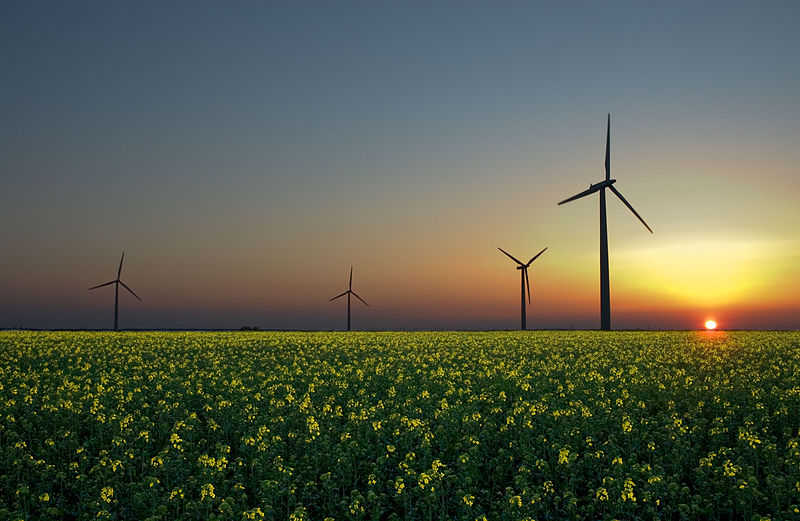Never in my nearly thirty years as an environmental journalist have I seen such doom and gloom. And that era has seen a lot of doom and gloom, starting with the worldwide drought that made “Planet of the Year” in Time magazine in 1988 and continuing through predictions of global Armageddon from industrial pollutants and the dregs of an advanced society.
Unfortunately, the ill mood today stems from politics, not the engineering and economic challenges of environmental protection. In fact, a scan of the headlines reveals that there is abundant good news in the race to save the planet. An assortment of cheery bits from the press is revelatory.
 |
According to Climate Nexus, “Energy efficiency policies led to a 1.8 percent drop in energy intensity — the amount of energy used per unit of GDP” — in 2015, which is “triple the average rate of decline over past decade.” The respected blog sourced the International Energy Agency, reporting that “the 35 developed nations tracked by the IEA saved $540 billion due to energy efficiency measures.” That in turn is “enough energy to power Japan for a full year.” According to the web site, “China’s energy efficiency efforts in particular have been impressive: energy intensity declined by 30 percent in [the] past 15 years, meaning the country’s energy savings are now equal to its renewable energy supply.” That means, of course, that efficiency is on par with other “sources” of energy, due to modern technology.
EPA put out a press release in October touting its “sixth year of Greenhouse Gas Reporting Program data, detailing greenhouse gas pollution trends and emissions broken down by industrial sector, geographic region and individual facilities.” So far, so good. Now the good news: “In 2015, reported emissions from large industrial sources, representing approximately 50 percent of total U.S. greenhouse gas emissions, were 4.9 percent lower than 2014, and 8.2 percent lower than 2011.”
The National Oceanic and Atmospheric Administration reports that “visitors to NOAA’s Olympic Coast National Marine Sanctuary and the immediate area boosted the region’s economy with $102 million in spending, supporting nearly 1,200 jobs and generating $46 million in local income for business owners and employees in 2014, according to a NOAA analysis using the most recent figures available.” Indeed, 41 percent of Washington state households have visited the sanctuary.
E&E News is a cornucopia of good news on climate change. “The world's first carbon capture project on a large coal plant is pushing back against skepticism that it’s not a viable demonstration of the technology,” according to the environmental web site. “Utility SaskPower said...that its Boundary Dam project in Canada had injected 800,000 metric tons of carbon dioxide underground in one year, reaching its full target for the time period.”
E&E also reports that “the U.S. power sector may be able to comply with federal climate regulations through 2025 without changing any plans, according to a new analysis by MJ Bradley & Associates.”
Finally, E&E observes that “the release of U.S. carbon dioxide emissions in the first half of [2016] sank to their lowest level since 1991.” According to E&E, the Energy Information Administration attributed the decline to “a warm winter, slumping use of coal-fired electricity, and strong growth in renewable and hydroelectric power.” Further, “it was the first time in 25 years that emissions during the first six months of any year were that low.”
 |
According to Bloomberg, “The International Energy Agency forecasts that global gasoline consumption has all but peaked as more efficient cars and the advent of electric vehicles from new players such as Tesla Motors Inc. halt demand growth in the next 25 years.” Not only will pump jockeys be out of a job, but “that shift will have profound consequences for the oil-refining industry because gasoline accounts for one in four barrels consumed worldwide.”
Scientific American chimes in that “the installed price of solar energy has declined significantly in recent years as policy and market forces have driven more and more solar installations.” Further, “the latest data show that the continued decrease in solar prices is unlikely to slow down anytime soon, with total installed prices dropping by 5 percent for rooftop residential systems, and 12 percent for larger utility-scale solar farms.” There is more good news: “With solar already achieving record-low prices, the cost decline observed in 2015 indicates that the coming years will likely see utility-scale solar become cost competitive with conventional forms of electricity generation.”
These tidbits are just a handful of the dozens of stories from around the world highlighting that environmental norms are found to be basic to society’s functioning.
